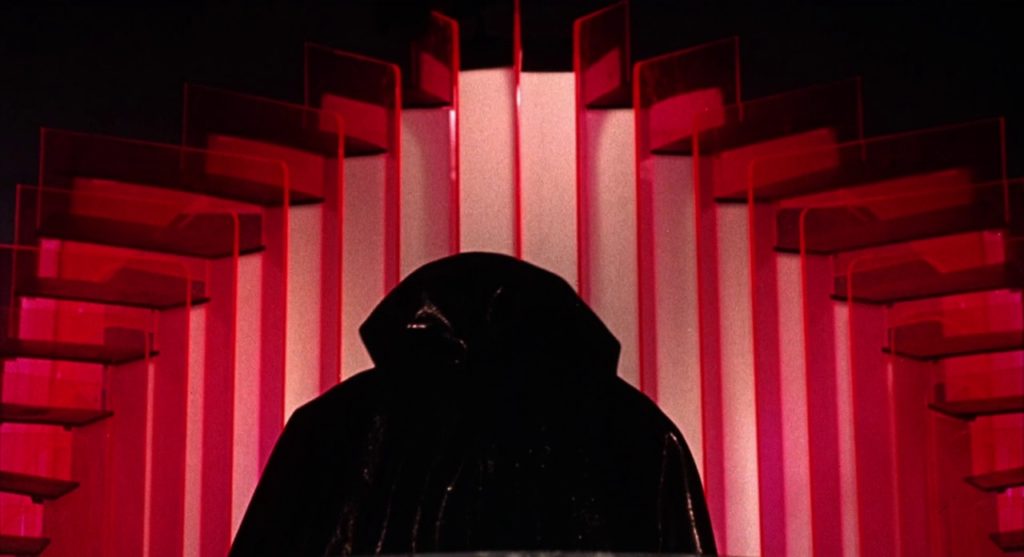Title: Godzilla x Kong: The New Empire
Director: Adam Wingard
Writers: Terry Rossio, Simon Barrett, Jeremy Slater, Adam Wingard (story)
Starring: Rebecca Hall, Brian Tyree Henry, Brian Tyree Henry, Dan Stevens, Kaylee Hottle, Alex Ferns, Fala Chen, Rachel House
IMDB entry
Like the previous entry in the series, Godzilla x Kong: The New Empire works because it understands what people going to a Godzilla films do and don’t want to see: monsters fighting, not people bickering.
You know that part of the Pitch Meeting video for Godzilla vs. Kong where the writer goes “Giant monkey punches giant lizard!” and the producer immediately stops worrying about logic?
Yeah, I’m that guy.
The movie starts with Dr. Ilene Andrews (Rebecca Hall, sporting Jamie Lee Curtis’ hairstyle) mystified by signals detected in their hollow earth station that also seem to be giving her adopted deaf monster-whisperer Iwi daughter Jia (Kaylee Hottle) visions. In the Hollow Earth, Kong is suffering from loneliness and a infected tooth, and comes up to the surface to have it replaced (!) by kaiju veterinarian (!!) Trapper (Dan Stevens). Meanwhile, Godzilla rises from his slumbers, slays titan Scylla (sort of a giant crab thing) in Rome, and then levels a nuclear power plant to feed on the radiation and power up for…something.
So Kong goes back to the Hollow Earth, followed by all the human characters in the above paragraph, plus conspiracy theory podcaster Bernie Hayes (Brian Tyree Henry, who, like Hall and Hottle, is reprising his role from Godzilla vs. Kong). Naturally, things go wrong for them and their redshirt gravity ship pilot. Meanwhile, Kong is lured by a mini-Kong to locate a tribe of giant primates ruled over by the cruel Scar King, with the assistance of his own enslaved titan Shimo, a cross between Stegosaurus and a D&D ice dragon, complete with the latter’s freeze breath.
Naturally, Kong goes up against the Scar King, and naturally, it being the first big Kong fight, he loses, because it turns out that Scar King is a better tool user than he is.
All of this, of course, sets up a tag team Kong and Godzilla vs. Scar King and Shimo fight at the climax.
The Monsterverse approach has evolved to “You will completely suspend all your disbelief, and in exchange we promise to overawe you with wonders.” Which solves the long-running problem with Godzilla movies, in that you never really care about the human characters. By minimizing their screen time to the bare minimum to move the plot forward in favor of more kaiju battles, this results in a quicker sprint past various plot improbabilities. (A kaiju dentist! A giant exoskeleton arm for Kong we just had lying around the hollow earth!)
To those who complain that the plot improbabilities in Godzilla x Kong: The New Empire are way too improbable, I would like to remind them that, merely by buying a ticket, viewers have already accepted the existence of a hollow earth and a high-speed subterranean tunnel between Pensacola and Hong Kong that was evidently built in less than a decade by private funds without anyone finding out that was on display in the first Godzilla vs. Kong. Compared to that, a giant Kong exoskeleton lying around in a convenient location is rounding error.
Also, to those that further complain the Monsterverse is too silly compared to the original Toho movies, I say: Remember this?
Or this?
Can you make a Godzilla film where the human characters don’t suck? It’s possible. The original Gojira and Godzilla, Mothra and King Ghidorah: Giant Monsters All-Out Attack both come to mind. I have not seen Godzilla Minus One (the timing just didn’t work out for it’s short run here), which Critical Drinker and others have indicated does a much better job on the human story front.
But instead of human drama, you get more kaiju fights, giant crystal energy pyramids, and a flaming cavern right out of a D&D supplement.
It’s a fair trade.
As a bonus, here’s the Pitch Meeting video for this one.


